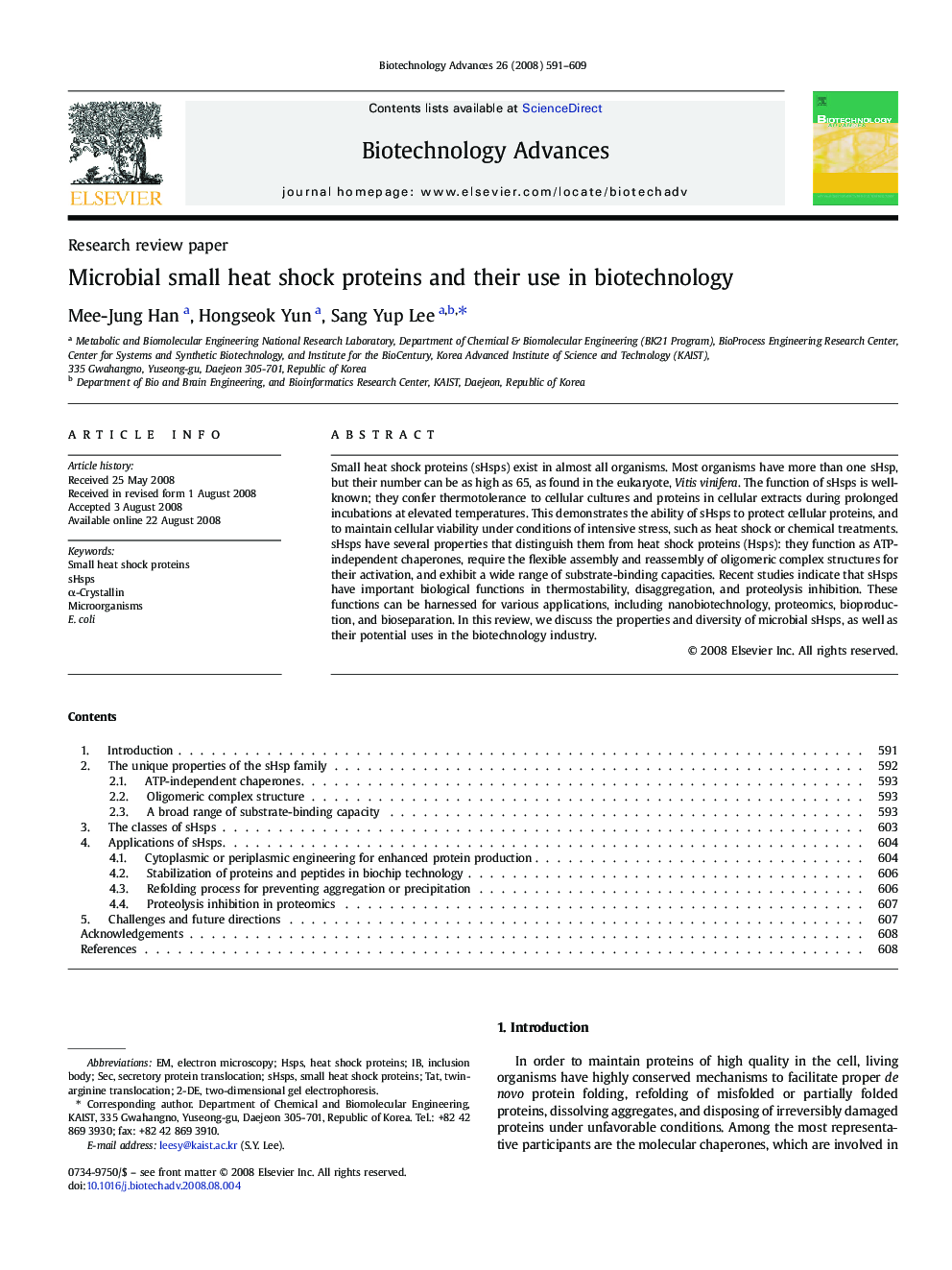| Article ID | Journal | Published Year | Pages | File Type |
|---|---|---|---|---|
| 14491 | Biotechnology Advances | 2008 | 19 Pages |
Small heat shock proteins (sHsps) exist in almost all organisms. Most organisms have more than one sHsp, but their number can be as high as 65, as found in the eukaryote, Vitis vinifera. The function of sHsps is well-known; they confer thermotolerance to cellular cultures and proteins in cellular extracts during prolonged incubations at elevated temperatures. This demonstrates the ability of sHsps to protect cellular proteins, and to maintain cellular viability under conditions of intensive stress, such as heat shock or chemical treatments. sHsps have several properties that distinguish them from heat shock proteins (Hsps): they function as ATP-independent chaperones, require the flexible assembly and reassembly of oligomeric complex structures for their activation, and exhibit a wide range of substrate-binding capacities. Recent studies indicate that sHsps have important biological functions in thermostability, disaggregation, and proteolysis inhibition. These functions can be harnessed for various applications, including nanobiotechnology, proteomics, bioproduction, and bioseparation. In this review, we discuss the properties and diversity of microbial sHsps, as well as their potential uses in the biotechnology industry.
